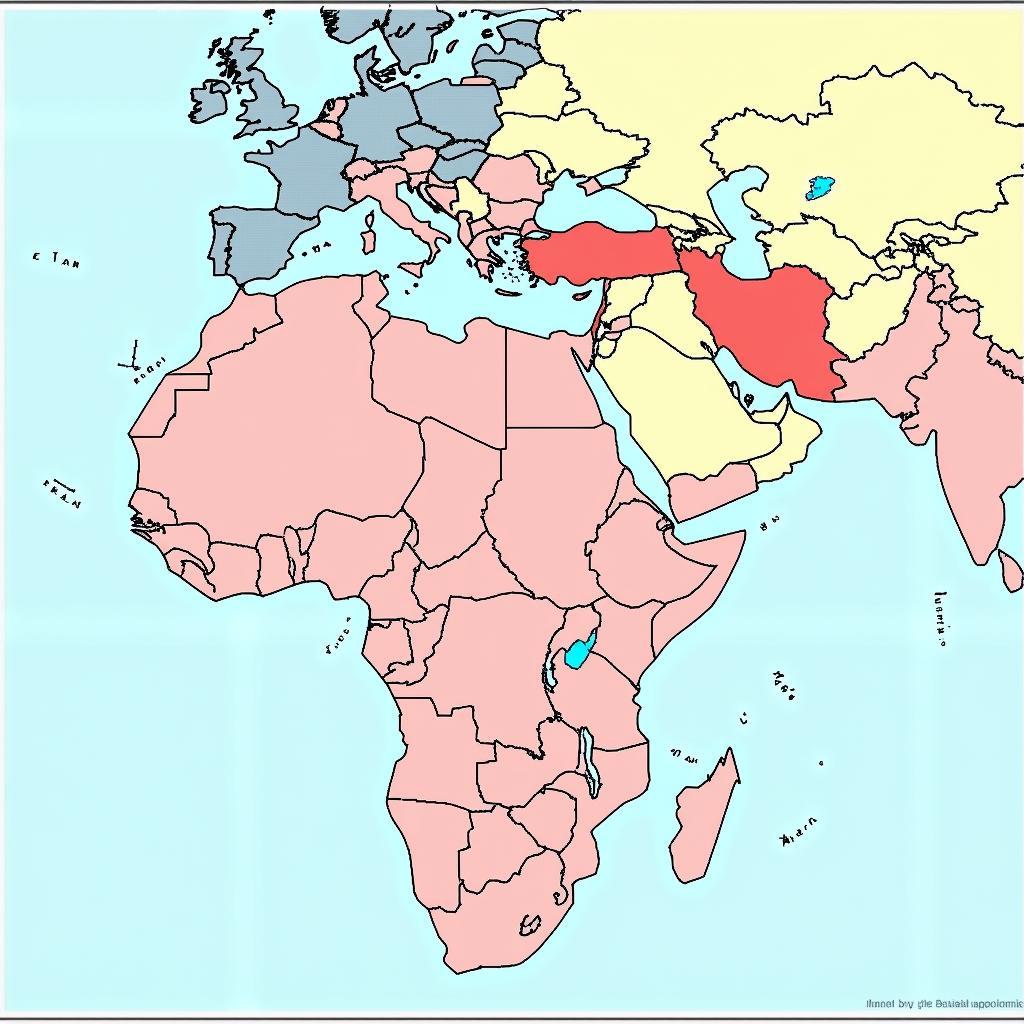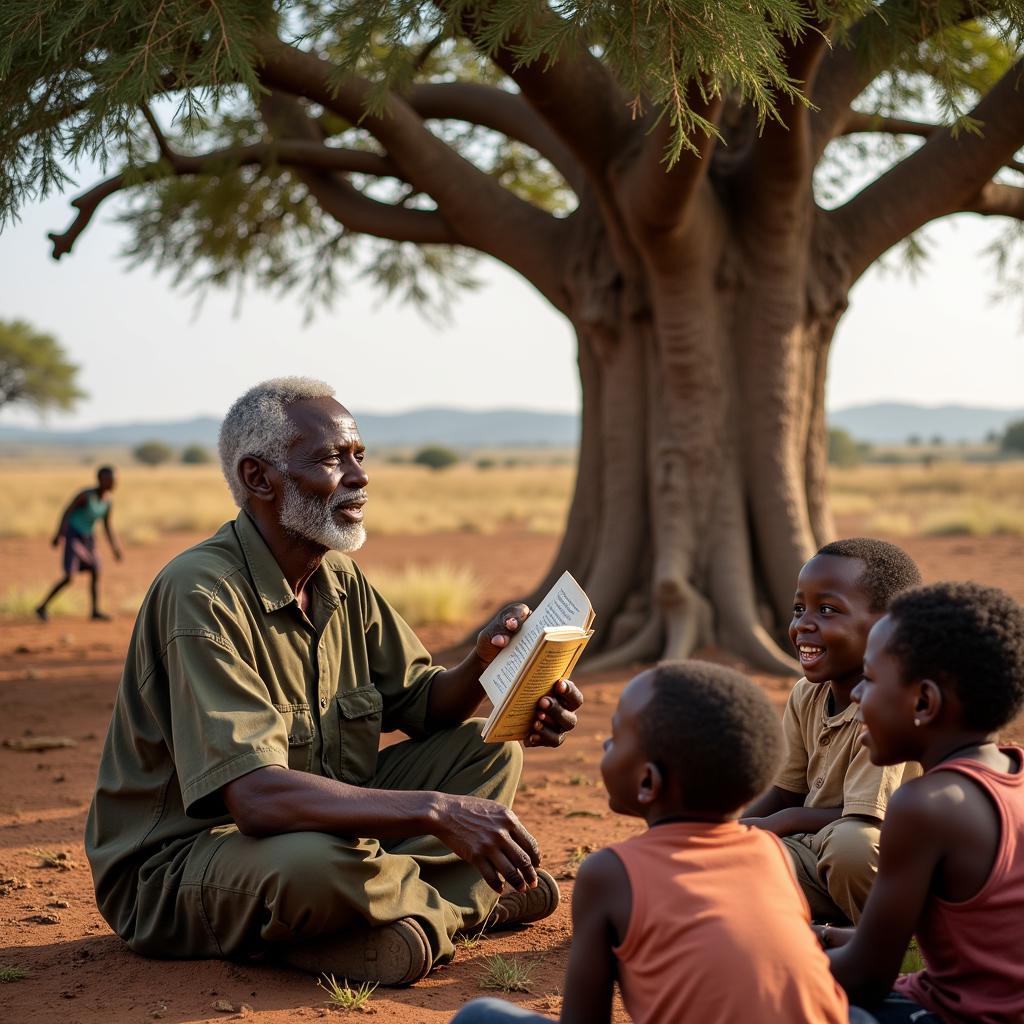African Colonies 1930 Map: A Glimpse into a Turbulent Era
The African Colonies 1930 Map paints a stark picture of a continent almost entirely under European rule. This period, sandwiched between two World Wars, saw the height of colonialism’s grip on Africa, with far-reaching consequences that continue to shape the continent today. Understanding this map and the stories it tells is crucial for comprehending the complexities of modern Africa.
A Continent Divided: Who Controlled Africa in 1930?
By 1930, only Ethiopia and Liberia remained independent nations in Africa. The rest of the continent was carved up between European powers, primarily Great Britain, France, Portugal, Belgium, Spain, and Italy.
 African Colonies Map 1930: Showing European Powers
African Colonies Map 1930: Showing European Powers
- Great Britain: Boasting the largest colonial empire, Britain controlled territories from Egypt and Sudan in the north to South Africa, Rhodesia (now Zimbabwe), and Bechuanaland (now Botswana) in the south. Their possessions also extended eastward to Kenya, Uganda, and Tanganyika (now Tanzania).
- France: France’s colonial empire, the second largest, encompassed vast territories in West Africa, including present-day Senegal, Mali, Ivory Coast, and Niger. They also held significant portions of North Africa, notably Algeria, Tunisia, and Morocco.
- Portugal: Portugal clung tightly to its colonies of Angola and Mozambique in Southern Africa, Guinea-Bissau in West Africa, and the islands of Cape Verde and São Tomé and Príncipe.
- Belgium: Belgium controlled the resource-rich Congo, infamous for its brutal exploitation under King Leopold II.
- Italy: Italy’s colonial ambitions were primarily focused on the Horn of Africa, where they held Eritrea, Somalia, and briefly, Ethiopia.
- Spain: Spain held smaller territories, including Spanish Morocco, Spanish Sahara (now Western Sahara), and Equatorial Guinea.
Beyond the Lines: The Human Impact of Colonialism
The 1930 map, while geographically informative, fails to capture the devastating human cost of colonialism. The arbitrary borders drawn by European powers divided ethnic groups, ignited conflicts, and exploited resources, leaving lasting scars on the African landscape.
 African Family During Colonial Era
African Family During Colonial Era
Professor Chinua Okoye, historian specializing in 20th-century Africa, explains:
“The map is a stark reminder of the artificiality of colonial borders, drawn with little regard for the existing ethnic and cultural realities of the continent. This legacy continues to haunt many African nations today, fueling internal conflicts and instability.”
The Seeds of Change: Resistance and the Path to Independence
While the 1930 map might suggest a sense of permanence to European rule, the seeds of resistance were already being sown. Africans, across the continent, were challenging colonial domination through various forms of resistance.
- Political movements: From nascent nationalist parties to pan-African organizations, Africans were mobilizing for self-determination.
- Intellectual resistance: African writers, poets, and intellectuals challenged colonial narratives, asserting their cultural identity and exposing the injustices of colonialism.
- Religious movements: Indigenous religious movements, often incorporating elements of resistance, emerged as a powerful force against colonial oppression.
These efforts, combined with the changing global order after World War II, eventually led to the dismantling of colonial empires. By the late 20th century, most African nations had achieved independence, forever altering the map of Africa.
Looking Back to Move Forward: The Importance of Understanding 1930
The African colonies 1930 map serves as a powerful reminder of a tumultuous period in history. It is a reminder of the resilience of the African people, who, despite facing immense challenges, fought tirelessly for their freedom and self-determination.
Understanding this period, and the legacies it left behind, is crucial for navigating the complexities of modern Africa. By acknowledging the past, we can work towards a future where the lines on the map reflect the aspirations and dreams of the people they represent, not the ambitions of empires long gone.


